
Exposé Online
What's old
Exposé print issues (1993-2011)
- 1 (October 1993)
- 2 (February 1994)
- 3 (May 1994)
- 4 (August 1994)
- 5 (October 1994)
- 6 (March 1995)
- 7 (July 1995)
- 8 (November 1995)
- 9 (March 1996)
- 10 (August 1996)
- 11 (February 1997)
- 12 (May 1997)
- 13 (October 1997)
- 14 (February 1998)
- 15 (July 1998)
- 16 (January 1999)
- 17 (April 1999)
- 18 (November 1999)
- 19 (May 2000)
- 20 (October 2000)
- 21 (March 2001)
- 22 (July 2001)
- 23 (December 2001)
- 24 (April 2002)
- 25 (September 2002)
- 26 (February 2003)
- 27 (August 2003)
- 28 (December 2003)
- 29 (April 2004)
- 30 (September 2004)
- 31 (March 2005)
- 32 (September 2005)
- 33 (May 2006)
- 34 (March 2007)
- 35 (January 2008)
- 36 (October 2008)
- 37 (July 2009)
- 38 (July 2010)
- 39 (Summer 2011)
Features
The Zeuhl School —
The Extended Family of Magma
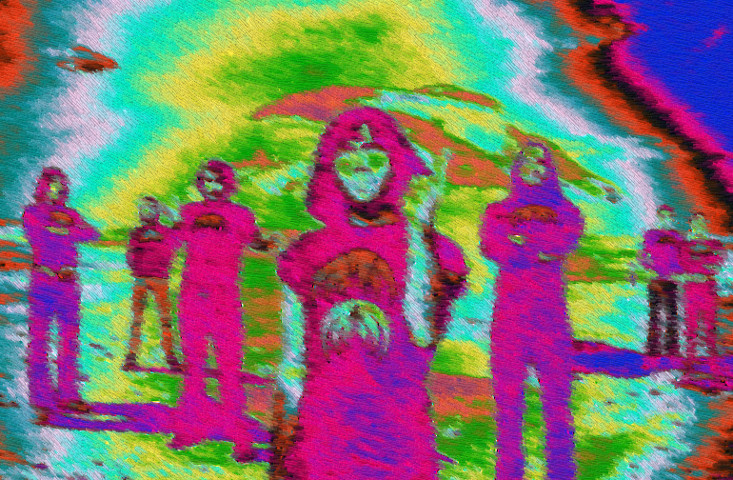
When considering the legacy of Magma, which continues to this day, one must recognize the huge wake they left behind: Many of France’s best musicians were once members, or associates of members, or somehow were touched by their influence. Thus, their pervasive effect on the French jazz-rock scene cannot be understated. After Magma it would never quite be quite the same again. In this piece I will attempt to cover (albeit briefly) some of the many spin-offs, feeders, side projects, and solo works by many of Vander’s former and current associates. This overview is not intended to be exhaustive and complete – instead it is intended to establish some of the relationships between certain formations and musicians who carried the zeuhl spirit forward, and give some information regarding them.
by Peter Thelen, Published 1995-11-01
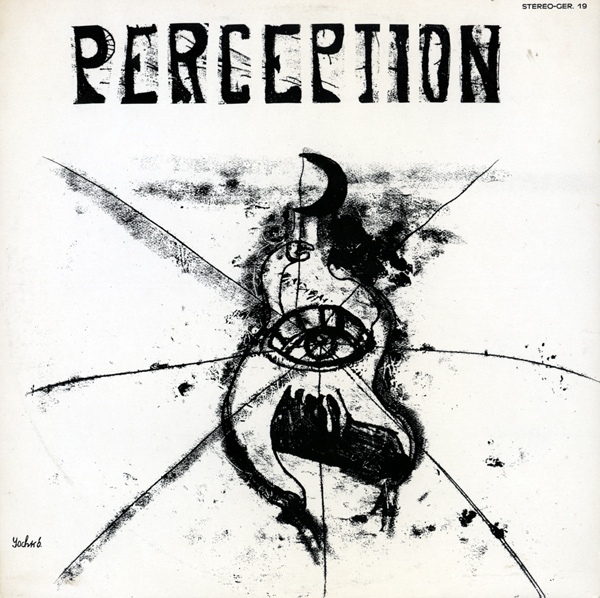 Hungarian born reedsman Yochk’o “Jeff” Seffer, who had played with Vander in other formations prior to Magma, joined the lineup in time for their second album. Previously, Seffer had played with the jazz unit Perception, whom he would rejoin again only a year and a half later after leaving Magma. But Seffer would leave his mark on the Magma sound, and Magma would leave its mark on him. Altogether, Perception would release three albums between ‘71 and ‘74, all worthy of investigation. Perhaps better known is Seffer’s formation with keyboardist François Cahen, who also left Magma about the same time: Zao recorded a total of five albums between ‘73 and ‘77 (although Seffer was not involved in the fifth) and the lineup included stellar musicians like bassist Joel Dugrenot, drummer Jean-My Truong, vocalist Mauricia Platon, and bassist Gerard Prevost. Zao’s reissues have been well documented in the pages of Exposé, in fact a detailed review of their second album Osiris can be found elsewhere in this issue. And, of course, last year Zao reformed with Seffer and Cahen last year to record a brand new album, Akhenaton.
Hungarian born reedsman Yochk’o “Jeff” Seffer, who had played with Vander in other formations prior to Magma, joined the lineup in time for their second album. Previously, Seffer had played with the jazz unit Perception, whom he would rejoin again only a year and a half later after leaving Magma. But Seffer would leave his mark on the Magma sound, and Magma would leave its mark on him. Altogether, Perception would release three albums between ‘71 and ‘74, all worthy of investigation. Perhaps better known is Seffer’s formation with keyboardist François Cahen, who also left Magma about the same time: Zao recorded a total of five albums between ‘73 and ‘77 (although Seffer was not involved in the fifth) and the lineup included stellar musicians like bassist Joel Dugrenot, drummer Jean-My Truong, vocalist Mauricia Platon, and bassist Gerard Prevost. Zao’s reissues have been well documented in the pages of Exposé, in fact a detailed review of their second album Osiris can be found elsewhere in this issue. And, of course, last year Zao reformed with Seffer and Cahen last year to record a brand new album, Akhenaton.
 Yet another band which Seffer was involved with in the mid-70s – and which roughly paralleled Zao – was Speed Limit, a band led by drummer George Jinda, and also featuring Joel Dugrenot and then Magma bassist Jannick Top. Speed limit would record two albums, both self-titled, in ‘75 and ‘76. Both are very difficult to find, but well worth the search. By the end of the 70s, Seffer would be directing most of his energy to his solo project Neffesh Music, with a sound which involved much of what he had accumulated in Zao, Speed Limit, and other bands, but also with avant-garde neo-classical and folk-music influences from his native Hungary. Four Neffesh Music albums were recorded, but only three have been released; the third, Ghilgoul from ‘79, has just been reissued by Musea, and all come highly recommended. Through the 80s and 90s, Seffer has remained busy, releasing several solo albums, as well as periodic reformations of Zao. The eponymous release by his 90s jazz quartet Mestari was reviewed in #6. He has, no doubt been one of the most prolific ex-members of Magma.
Yet another band which Seffer was involved with in the mid-70s – and which roughly paralleled Zao – was Speed Limit, a band led by drummer George Jinda, and also featuring Joel Dugrenot and then Magma bassist Jannick Top. Speed limit would record two albums, both self-titled, in ‘75 and ‘76. Both are very difficult to find, but well worth the search. By the end of the 70s, Seffer would be directing most of his energy to his solo project Neffesh Music, with a sound which involved much of what he had accumulated in Zao, Speed Limit, and other bands, but also with avant-garde neo-classical and folk-music influences from his native Hungary. Four Neffesh Music albums were recorded, but only three have been released; the third, Ghilgoul from ‘79, has just been reissued by Musea, and all come highly recommended. Through the 80s and 90s, Seffer has remained busy, releasing several solo albums, as well as periodic reformations of Zao. The eponymous release by his 90s jazz quartet Mestari was reviewed in #6. He has, no doubt been one of the most prolific ex-members of Magma.
During and after Zao, François Cahen has released several piano based albums, although his solo work tends to reflect a bit less of the Magma essence than that of his cohorts. His playing style is very lyrical and original, with more of a purely jazz style. One of his best known recordings is perhaps Faton-Bloom, recorded with ex-Gong saxophonist Didier “Bloomdido” Malherbe.
 Backing up for a moment to the early days of Magma, flautist/saxophonist Teddy Lasry, who remained with the band up through early ‘72 – long enough to record two albums – and compose one track on each, split the band around the same time as Seffer and Cahen. After playing in other bands and doing session work, as well as returning to Magma in time for the recording of the third album, he began releasing a string of highly regarded and very original solo albums in the mid-70s. Of these I have heard only two – E=Mc2 and Seven Stones – both outstanding. Others have received varying recommendations. Regrettably, to date none of these have been reissued. Maybe a future suggestion for Seventh or Musea.
Backing up for a moment to the early days of Magma, flautist/saxophonist Teddy Lasry, who remained with the band up through early ‘72 – long enough to record two albums – and compose one track on each, split the band around the same time as Seffer and Cahen. After playing in other bands and doing session work, as well as returning to Magma in time for the recording of the third album, he began releasing a string of highly regarded and very original solo albums in the mid-70s. Of these I have heard only two – E=Mc2 and Seven Stones – both outstanding. Others have received varying recommendations. Regrettably, to date none of these have been reissued. Maybe a future suggestion for Seventh or Musea.
In 1972, Magma undertook a tour of Belgium, with a young band called Arkham as the opening act, playing a Soft Machine styled original music. At the end of the tour Christian Vander asked two of the members to join Magma – keyboardist Jean-Luc Manderlier and drummer Daniel Denis. Though Manderlier would stay on through their next album (Mekanïk Destruktïw Kommandöh), Denis left after only a few gigs, and started a new band which would eventually become Univers Zero, creating a most intense and sinister style of chamber rock, whose legacy of five albums should be known to all.
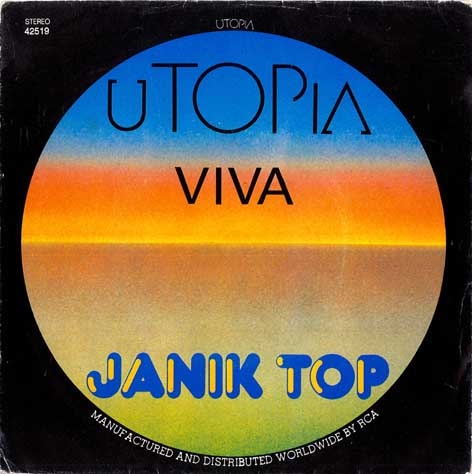 Bassist Jannick Top, who came to Magma in time for the third album from a band called Troc, played with several other bands (including the aforementioned Speed Limit) and did quite a bit of session work as well. His unique, thunderous bass style became part of the sound that defined Magma in the post-MDK period. Top stuck around long enough to record three albums with the band, split for a while, and then return to be a major contributor to Üdü Wüdü. During his time away, he formed the Utopic Sporadic Orchestra (also featuring ex-Magma saxophonist Richard Raux), which sadly never released an album, but a Jannick Top single “Utopia Viva” / “Epithocanthropus Erectus II” was released during that period. He also did quite a bit of session work, and can be found playing on albums by Nyl, Andre Ceccarelli, Dayde, J.L. Bucchi, Omataxalia, and others. Since his final departure from Magma in early ‘77, Top has been doing regular session work and soundtracks – and recently produced a couple soundtrack albums with ex-Transit Express keyboardist Serge Perathoner. The one titled Music Film Scoring contains some heavily zeuhl influenced pieces that would be of interest to any Magma fan.
Bassist Jannick Top, who came to Magma in time for the third album from a band called Troc, played with several other bands (including the aforementioned Speed Limit) and did quite a bit of session work as well. His unique, thunderous bass style became part of the sound that defined Magma in the post-MDK period. Top stuck around long enough to record three albums with the band, split for a while, and then return to be a major contributor to Üdü Wüdü. During his time away, he formed the Utopic Sporadic Orchestra (also featuring ex-Magma saxophonist Richard Raux), which sadly never released an album, but a Jannick Top single “Utopia Viva” / “Epithocanthropus Erectus II” was released during that period. He also did quite a bit of session work, and can be found playing on albums by Nyl, Andre Ceccarelli, Dayde, J.L. Bucchi, Omataxalia, and others. Since his final departure from Magma in early ‘77, Top has been doing regular session work and soundtracks – and recently produced a couple soundtrack albums with ex-Transit Express keyboardist Serge Perathoner. The one titled Music Film Scoring contains some heavily zeuhl influenced pieces that would be of interest to any Magma fan.
 Magma’s 1976 graduating class produced a number of spin-offs worthy of note. First and foremost is the seven-piece band formed by bassist Bernard Paganotti and keyboardist Patrick Gauthier, also involving names like Michel Ettori and Jean-Philippe Goude, among others. Paganotti, who had been Top’s replacement, joining Magma in mid-’75 , has a similar bass style – perhaps a bit more punchy and fluid – and he brought this with him to Weidorje, a band with a sound very close to Magma itself, the chief difference being the vocal approach. Although Weidorje was together and gigging for nearly four years, they only managed to produce one eponymous album in ‘78, which stands as testament to the compositional prowess and spirited musicianship of this lineup. In fact a full album’s worth of material had been written for a proposed second album, but remained unrecorded (as live tapes from their latter days will reveal). Most of these compositions would find their way onto the solo albums of Weidorje’s members after the band split in late ‘79, but a couple that didn’t were included as bonus tracks on Musea’s CD reissue of the album.
Magma’s 1976 graduating class produced a number of spin-offs worthy of note. First and foremost is the seven-piece band formed by bassist Bernard Paganotti and keyboardist Patrick Gauthier, also involving names like Michel Ettori and Jean-Philippe Goude, among others. Paganotti, who had been Top’s replacement, joining Magma in mid-’75 , has a similar bass style – perhaps a bit more punchy and fluid – and he brought this with him to Weidorje, a band with a sound very close to Magma itself, the chief difference being the vocal approach. Although Weidorje was together and gigging for nearly four years, they only managed to produce one eponymous album in ‘78, which stands as testament to the compositional prowess and spirited musicianship of this lineup. In fact a full album’s worth of material had been written for a proposed second album, but remained unrecorded (as live tapes from their latter days will reveal). Most of these compositions would find their way onto the solo albums of Weidorje’s members after the band split in late ‘79, but a couple that didn’t were included as bonus tracks on Musea’s CD reissue of the album.
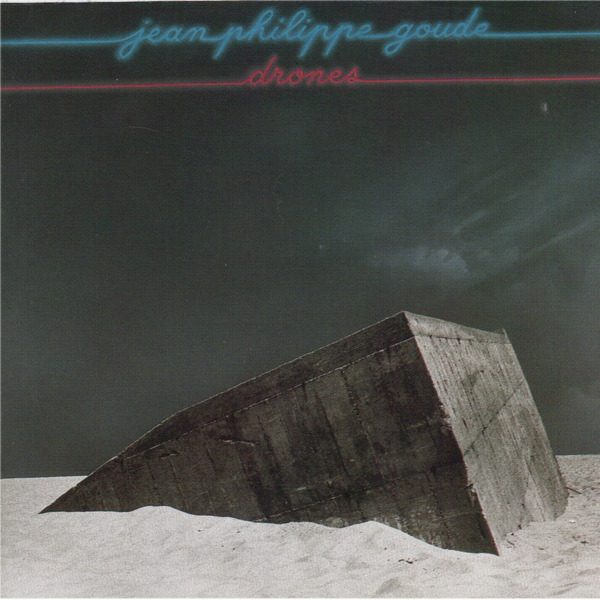 After Weidorje, Jean-Philippe Goude would be the first ex-member to release a solo album, the highly regarded Drones in 1980, which involved most of the Weidorje lineup. The sound is very much in the same vein, but as might be expected, is a bit more keyboard oriented (a full review of the CD reissue is in #4). Next to release an album was Patrick Gauthier, with his incredible Bébé Godzilla, again employing many of his former Weidorje and Magma colleagues, as well as his earlier bandmates from Heldon (a review of this album is featured in #6). Both Goude and Gauthier have remained active to this day, Goude moving more in a neo-classical direction, while Gauthier has moved closer to jazz.
After Weidorje, Jean-Philippe Goude would be the first ex-member to release a solo album, the highly regarded Drones in 1980, which involved most of the Weidorje lineup. The sound is very much in the same vein, but as might be expected, is a bit more keyboard oriented (a full review of the CD reissue is in #4). Next to release an album was Patrick Gauthier, with his incredible Bébé Godzilla, again employing many of his former Weidorje and Magma colleagues, as well as his earlier bandmates from Heldon (a review of this album is featured in #6). Both Goude and Gauthier have remained active to this day, Goude moving more in a neo-classical direction, while Gauthier has moved closer to jazz.
The last standard-bearer of Weidorje was Paganotti himself, whose new band Paga would include two Weidorje compositions (“Mitchinoku” and “Une Parcelle d’Urantia”) on their first, self-titled album from ‘85. This album would also feature Gauthier, Goude, and other ex-Weidorje members Alain Guillard, Yvon Guillard, and Kirt Rust – in short, a Weidorje reunion. For the second Paga album in ‘88, Haunted, the sound would move a bit more in a rock-fusion direction, while still employing a solid zeuhl underpinning. Ex-Magma lead vocalist Klaus Blasquiz became a full member of Paga for this and all subsequent projects. A third album, Gnosis, moves their sound into more acoustic based realms (see review of Gnosis in #3). All three Paga albums are highly recommended.
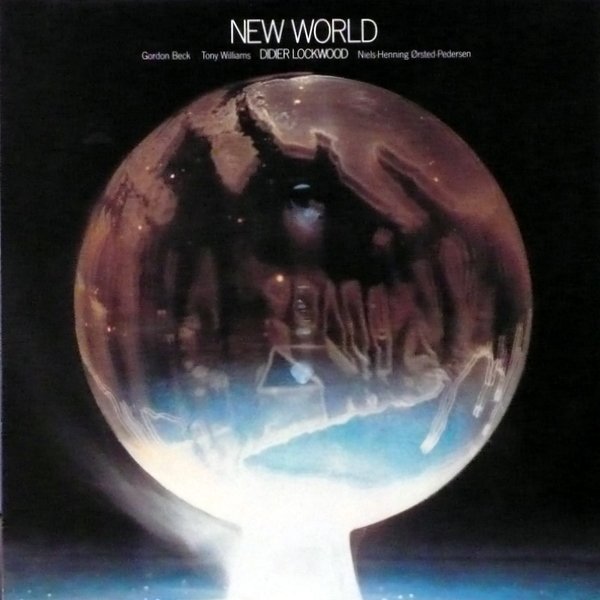 Also from the class of ‘76 was violinist Didier Lockwood, who has been involved in numerous projects since leaving Magma’s touring lineup. His first and most zeuhl influenced project was Surya, with his brother Francis (keys) and also featuring Sylvain Marc on bass, drummer Jean-My Truong and second keyboardist Luc Plouton. Marc and My-Truong create a solid zeuhl bottom end while Plouton and the Lockwood brothers evoke a powerful and highly melodic fusion, with violin soaring over all. Some may be reminded of Ponty, yet the sound here is more punchy and animated, perhaps less emotional than Ponty. Since then, Lockwood has released numerous albums under his own name, moving gradually into a more lite-jazz sound. He also participated in numerous other projects, including Fusion (more on this later), Clearlight, Pandemonium, Uzeb, Philip Catherine, and Pierre Moerlen’s Gong, and was also a member of Zao for the album Kawana.
Also from the class of ‘76 was violinist Didier Lockwood, who has been involved in numerous projects since leaving Magma’s touring lineup. His first and most zeuhl influenced project was Surya, with his brother Francis (keys) and also featuring Sylvain Marc on bass, drummer Jean-My Truong and second keyboardist Luc Plouton. Marc and My-Truong create a solid zeuhl bottom end while Plouton and the Lockwood brothers evoke a powerful and highly melodic fusion, with violin soaring over all. Some may be reminded of Ponty, yet the sound here is more punchy and animated, perhaps less emotional than Ponty. Since then, Lockwood has released numerous albums under his own name, moving gradually into a more lite-jazz sound. He also participated in numerous other projects, including Fusion (more on this later), Clearlight, Pandemonium, Uzeb, Philip Catherine, and Pierre Moerlen’s Gong, and was also a member of Zao for the album Kawana.
Lastly from the ‘76 graduating class was keyboardist Jean-Pol Asseline, who joined shortly after the release of Köhntarkösz and is featured only on Magma’s Live album (and other live albums from that period). Of interest here is the group Rhesus O, which Asseline was a member of before joining Magma. With a sound close to early Magma, the album also featured early Magma alumni Richard Raux, Alain Hatot, and Francis Moze, as well as Bernard Paganotti. After his tenure, Asseline has more or less disappeared from music.

Although he stayed on board to record one more album with Magma, keyboardist Benoît Widemann kicked off his solo career during a period when the band had temporarily broken up (around Üdü Wüdü) with his solo debut Stress. He continued as a member of Magma (though dropped out of the lineup periodically to do session work and gig with other bands) while a second solo album Tsunami was released in ‘79. Unlike the first, this was more of a full band with woodwinds and keyboards fronting a fresh and novel jazz-rock sound, with folk, neo-classical and Caribbean influences. On a few tracks he goes full solo, which breaks up the album nicely. It was summer ‘81 when Widemann teamed up with Vander, Top, and Didier Lockwood to record their one-off project Fusion, a Magma side-project that explored more conventional fusion styles, offering each musician plenty of room for soloing – very unlike what they had done in Magma. Still, this is a strong album and well worth attention. Widemann would record one more solo record, 3, in 1984, another winner, at least as strong as Tsunami. Fusion has seen CD release, but sadly none of the Widemann solo catalog has been reissued (rumor has it that Musea has secured the rights to the first two, but when they will come out is anybody’s guess).
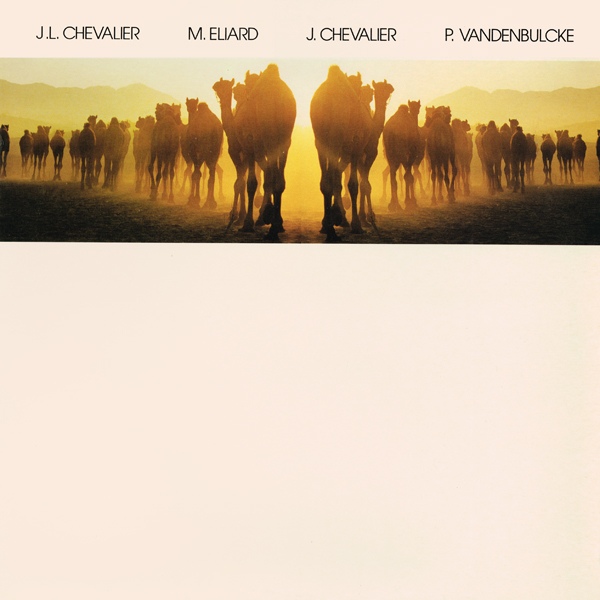 Before the Attahk album, in ‘77, there was a whole new surge of activity in the Magma camp. Bassist Guy Delacroix from Alan Stivell’s group, replaced Jannick Top, yet by the time the band hit the road Delacroix was joined by a second bassist Jean-Luc Chevalier. Delacroix’ activity outside of Magma has been limited mainly to session work on albums by François Breant, Benoît Widemann, Dan Ar Bras, and others, and had left Magma by the beginning of ‘79. Chevalier, who had previously been a member of Zig-Zag, remained with the band until ‘83, eventually switching to guitar. In 1984 he released his first album with his band Dromadaire, a powerful zeuhl-tinged jazz outing also featuring Jean “Popov” Chevalier (drums, sax, clarinet), Marc Eliard (bass), and Pascal Vandenbulcke (flute), who had split by the second album Tibet, leaving the group as a trio. Chevalier has continued to release albums through the 80s and 90s, each being further removed from the zeuhl sound, moving in a more purely jazz direction. His latest Le Km5 a Bangui is reviewed elsewhere in this issue.
Before the Attahk album, in ‘77, there was a whole new surge of activity in the Magma camp. Bassist Guy Delacroix from Alan Stivell’s group, replaced Jannick Top, yet by the time the band hit the road Delacroix was joined by a second bassist Jean-Luc Chevalier. Delacroix’ activity outside of Magma has been limited mainly to session work on albums by François Breant, Benoît Widemann, Dan Ar Bras, and others, and had left Magma by the beginning of ‘79. Chevalier, who had previously been a member of Zig-Zag, remained with the band until ‘83, eventually switching to guitar. In 1984 he released his first album with his band Dromadaire, a powerful zeuhl-tinged jazz outing also featuring Jean “Popov” Chevalier (drums, sax, clarinet), Marc Eliard (bass), and Pascal Vandenbulcke (flute), who had split by the second album Tibet, leaving the group as a trio. Chevalier has continued to release albums through the 80s and 90s, each being further removed from the zeuhl sound, moving in a more purely jazz direction. His latest Le Km5 a Bangui is reviewed elsewhere in this issue.
 Delacroix’ replacement in Magma, Michel Hervé, came from a group called Zou, along with keyboardist André Hervé and vocalist Maria Popkiewicz. The latter stayed on for some time, but the Hervé brothers were gone in less than a year. Michel would join another brother Jean-Luc for the first (cassette) album with his new six-piece band Shub Niggurath, a dark and experimental avant-garde formation, like a noisy and industrial answer to Univers Zero. Shub would go on to release an LP, another cassette, and a CD, but all without Michel’s participation. Nonetheless, these albums are spirited and challenging, and definitely worthy of investigation.
Delacroix’ replacement in Magma, Michel Hervé, came from a group called Zou, along with keyboardist André Hervé and vocalist Maria Popkiewicz. The latter stayed on for some time, but the Hervé brothers were gone in less than a year. Michel would join another brother Jean-Luc for the first (cassette) album with his new six-piece band Shub Niggurath, a dark and experimental avant-garde formation, like a noisy and industrial answer to Univers Zero. Shub would go on to release an LP, another cassette, and a CD, but all without Michel’s participation. Nonetheless, these albums are spirited and challenging, and definitely worthy of investigation.
No overview of the zeuhl school would be complete without the mention of the group Alien, a band which, at various times in the late 70s involved many members of Magma, including Vander himself, but left no recorded evidence from this period. Magma’s next bassist, Dominique Bertram, would be an ex-member of Alien, and was also a member of Yochk’o Seffer’s Neffesh Music, and a member of Zao beginning in the mid-80s, and is featured on the latest album Akhenaton. He’s also credited with numerous sessions, as well as a solo album featuring appearances by several other Magma members. Also from Alien was guitarist Jean-Michel Kajdan, who has also played with Francis and Didier Lockwood, Sylvain Marc, and released several albums under his own name.
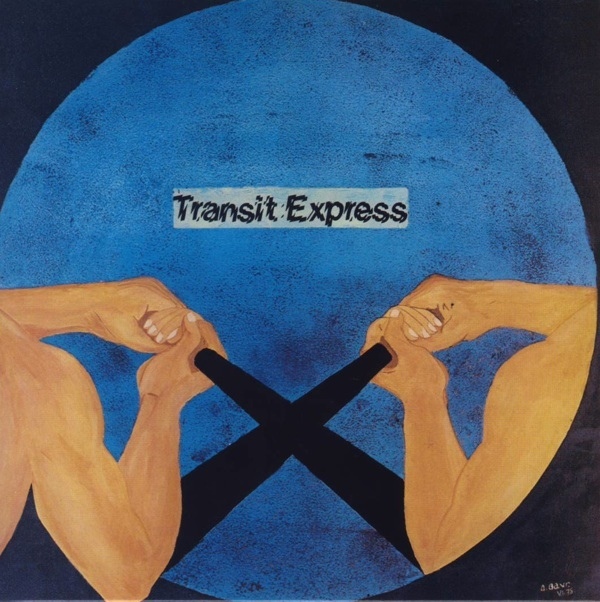
The 80s were even more turbulent as far as lineup turnover within Magma, people coming and going nearly constantly. The final year of the band (post-Merci) featured two outstanding drummers, as Vander left the kit to concentrate more on vocals, production, and keyboards. Claude Salmieri, who came to Magma fresh from Transit Express would in turn end up in the second lineup of Paga, eventually leaving that group (in the early 90s) to go solo. Michael Le Bars, on the other hand, was strictly moonlighting from his regular band Eider Stellaire, who had at that time released two outstanding and heavily zeuhl influenced albums, and would go on to release a third. Unfortunately, none of the Eider Stellaire albums have seen a CD reissue to date. All are very worthwhile.
One band that was heavily influenced by the Magma sound in the early 80s was Troll, which featured drummer Michael Altmayer, violist Nathalie Basset, and bassist/guitarist Jean-Pascal Boffo. During their prime period (1981-84), they had no releases, and the only evidence from that period are two live demo cassettes. In the mid-80s Boffo left to launch his solo career, taking some of the original Troll repertoire with him. A new studio version of Troll was put together by Altmayer and Basset in 1986, and an album was recorded with the participation of many ex-members of Magma, including Stella Vander, Klaus Blasquiz, Bernard Paganotti, Francis Moze, and Alain and Yvon Guillard. An album (LP) was recorded, and released by Musea in ‘88. This album contains several outstanding tracks (plus a few that are not so spectacular), and is another worthy of interest.
 In addition to those projects by the Magma alumni, there are countless other artists and bands who have absorbed some of their influence, without actually sharing membership. Some, such as Eskaton, Xaal, and Honeyelk have produced a music that is very close in style, yet incorporating certain elements that set them apart. Others, like Jean-Paul Prat, Serge Bringolf, Potemkine, and Rahmann, that operate in the jazz space just outside the Magma orbit, but have obviously been touched by their influence, combined with other equally unique influences. Indeed, this extended family of musicians and bands could go on to include half of the musicians in France!
In addition to those projects by the Magma alumni, there are countless other artists and bands who have absorbed some of their influence, without actually sharing membership. Some, such as Eskaton, Xaal, and Honeyelk have produced a music that is very close in style, yet incorporating certain elements that set them apart. Others, like Jean-Paul Prat, Serge Bringolf, Potemkine, and Rahmann, that operate in the jazz space just outside the Magma orbit, but have obviously been touched by their influence, combined with other equally unique influences. Indeed, this extended family of musicians and bands could go on to include half of the musicians in France!
In closing, it should be evident that we’ve just scratched the surface here. To do a truly comprehensive article covering all of the projects by ex-members of Magma and various related projects, as well as all of the bands influenced by Magma and the variations on the zeuhl sound, it would take a huge volume that space does not permit. This should offer some key starting points for the intrepid explorer. It might be added that many folks who have found the music of Magma a bit too harrowing initially have come to it over time via the spin-off groups. In fact, the music of Paga, Zao, Widemann, Gauthier, and others tends to be a bit more accessible, in a jazz-rock sort of way. For starters, one may want to check out the Musea CD compilation Enneade, which features one track by Magma (from the Merci period, don’t expect MDK), as well as tracks by Troll, Xalph, Paga, Yochk’o Seffer, Eskaton, Eider Stellaire, Francois Cahen, Univers Zero, and others, and offers a good introduction to the “Magma” sound.
Filed under: Profiles, Issue 8
Related artist(s): Jean Pascal Boffo, Magma, Didier Malherbe, Jannick Top, Univers Zéro, Stella Vander, Yochk'o Seffer, Christian Vander / Offering, Serge Bringolf, Eider Stellaire, Heldon, Dan Ar Braz, Jean-Philippe Goude, Patrick Gauthier, Clearlight, Gong, Bernard Paganotti, Zao, Philip Catherine, Jean-Paul Prat / Masal, Pierre Moerlen, Daniel Denis, Weidorje, Speed Limit, George Jinda, Eskaton, Xaal, Jean-Luc Chevalier, Shub-Niggurath, Transit Express, François "Faton" Cahen
What's new
These are the most recent changes made to artists, releases, and articles.
- Review: Olly Chalk - In Those Remote Stars
Published 2026-01-17 - Review: Jeff Pearce - Infinite Ambient: Winter Landscapes
Published 2026-01-16 - Release: Nektar - Mission to Mars
Updated 2026-01-15 11:59:57 - Release: Mordecai Smyth - Gather the Scattered Mind
Updated 2026-01-15 11:52:38 - Review: Trio of Bloom - Trio of Bloom
Published 2026-01-15 - Review: Barry Cleveland & Robert Rich - Elliptical Passage
Published 2026-01-14 - Release: Orchestra of the Upper Atmosphere - θ2
Updated 2026-01-13 23:09:38 - Release: Orchestra of the Upper Atmosphere - θ3
Updated 2026-01-13 23:07:05 - Release: Orchestra of the Upper Atmosphere - θ6
Updated 2026-01-13 22:55:18 - Release: Orchestra of the Upper Atmosphere - θ5
Updated 2026-01-13 22:52:03 - Release: Orchestra of the Upper Atmosphere - θ4
Updated 2026-01-13 22:47:05 - Release: Barry Schrader - Ambient : Aether
Updated 2026-01-13 22:29:29 - Review: Trinary System - The Hard Machine
Published 2026-01-13 - Release: Camahueto - Reflejos
Updated 2026-01-12 23:44:45 - Artist: Camahueto
Updated 2026-01-12 23:41:18 - Release: Danza de la Ira - Septies Kairos
Updated 2026-01-12 23:03:00 - Artist: Danza de la Ira
Updated 2026-01-12 22:56:20 - Release: Orchestra of the Upper Atmosphere - Orchestra of the Upper Atmosphere
Updated 2026-01-12 16:14:44 - Release: Orchestra of the Upper Atmosphere - θ7
Updated 2026-01-12 16:13:34 - Artist: Orchestra of the Upper Atmosphere
Updated 2026-01-12 16:12:18
